Often when I am asked why I make pottery, I flippantly reply that growing up in a household of artists every other medium was taken so I filled the table. In truth, as a beginning potter one of my dreams was to be able to make all the dishes for a meal. On a rainy October Saturday we had enough plates to host a potluck for 35 members of the Washington Oriental Ceramic Group.
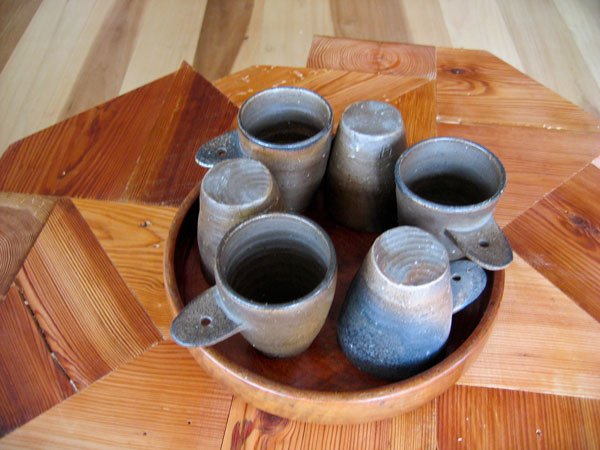 Through our cups, plates, and vases, Warren and I hoped to convey our philosophy of the importance of creative use as an aesthetic component of art.
Through our cups, plates, and vases, Warren and I hoped to convey our philosophy of the importance of creative use as an aesthetic component of art.
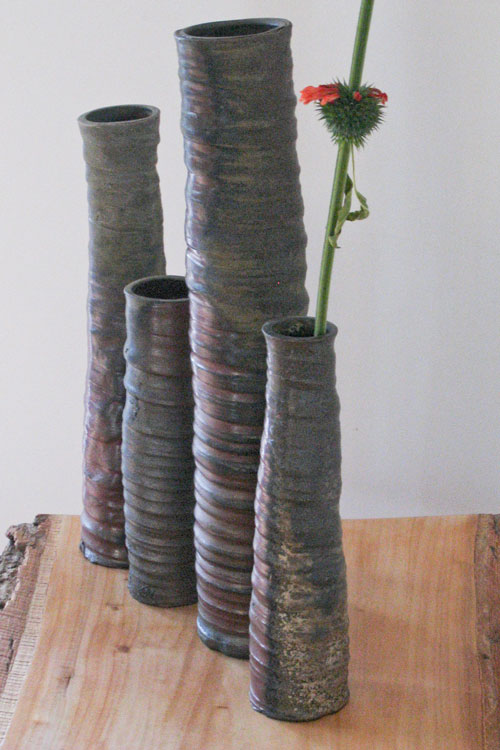 Viewing the work in the contrasting, simple white gallery enhances ones attention and focus to the ideas expressed in clay. For us the realm of physical functioning is similar to the surface of an inflated balloon--it can be expanded and stretched to encompass difficult uses as well as including the traditional habits of morning coffee or tea--but we don't want any punctures obliterating the balloon.
Viewing the work in the contrasting, simple white gallery enhances ones attention and focus to the ideas expressed in clay. For us the realm of physical functioning is similar to the surface of an inflated balloon--it can be expanded and stretched to encompass difficult uses as well as including the traditional habits of morning coffee or tea--but we don't want any punctures obliterating the balloon.
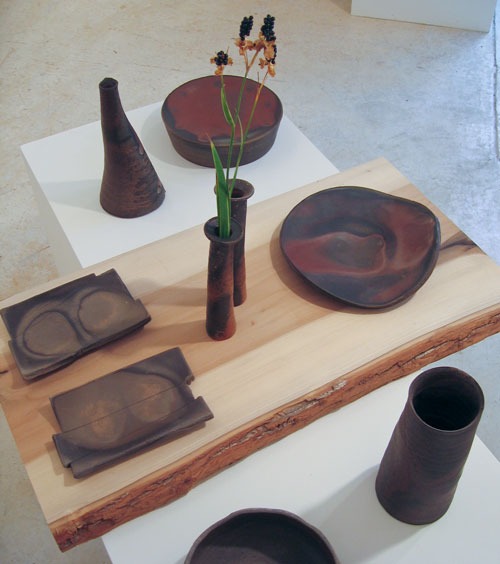 I had hoped for beautiful weather so our visitors could walk in the field and see the direct relationship between the inspiration of the Virginia hills and my expression of horizon lines and grasses in specific pots. When I walk in the rolling terrain of the Virginia piedmont, I rejoice in the moments when all I can see is hillside and sky. It's a similar feeling to being on the ocean when all one can see is sea and sky--when the horizon line becomes a boundary between the expression of landscape and the embodiment of landscape.
I had hoped for beautiful weather so our visitors could walk in the field and see the direct relationship between the inspiration of the Virginia hills and my expression of horizon lines and grasses in specific pots. When I walk in the rolling terrain of the Virginia piedmont, I rejoice in the moments when all I can see is hillside and sky. It's a similar feeling to being on the ocean when all one can see is sea and sky--when the horizon line becomes a boundary between the expression of landscape and the embodiment of landscape.
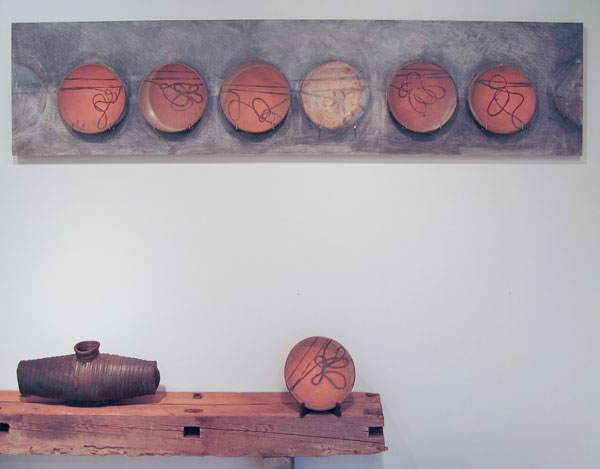 The woodfired work expresses an environmental feel partly due to the layered, atmospheric glazing of ash bonding to clay.
The woodfired work expresses an environmental feel partly due to the layered, atmospheric glazing of ash bonding to clay.
 The pouring rain kept many people from walking to the kiln, much less encountering pots ensconced in the field. My hope is that our example of living with and using pots will fill in the gaps of what was not verbally enunciated given the tight schedule.
The pouring rain kept many people from walking to the kiln, much less encountering pots ensconced in the field. My hope is that our example of living with and using pots will fill in the gaps of what was not verbally enunciated given the tight schedule.
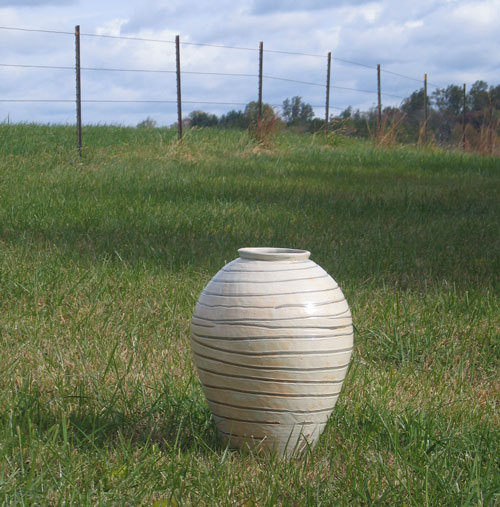


 I had hoped for beautiful weather so our visitors could walk in the field and see the direct relationship between the inspiration of the Virginia hills and my expression of horizon lines and grasses in specific pots. When I walk in the rolling terrain of the Virginia piedmont, I rejoice in the moments when all I can see is hillside and sky. It's a similar feeling to being on the ocean when all one can see is sea and sky--when the horizon line becomes a boundary between the expression of landscape and the embodiment of landscape.
I had hoped for beautiful weather so our visitors could walk in the field and see the direct relationship between the inspiration of the Virginia hills and my expression of horizon lines and grasses in specific pots. When I walk in the rolling terrain of the Virginia piedmont, I rejoice in the moments when all I can see is hillside and sky. It's a similar feeling to being on the ocean when all one can see is sea and sky--when the horizon line becomes a boundary between the expression of landscape and the embodiment of landscape.

